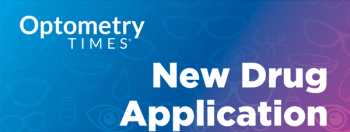
Close follow-up is key to managing pigmentary dispersion syndrome
When managing elevated IOP associated with PDS, the astute clinician recognizes this condition is usually benign but acknowledges the appreciable risk for progression to frank glaucoma.
When managing elevated IOP associated with pigmentary dispersion syndrome (PDS), the astute clinician recognizes this condition is usually benign but acknowledges the appreciable risk for progression to frank glaucoma, according to Michael Chaglasian, OD.
"Patients with PDS should be followed frequently for 1 or 2 years to monitor the course of their disease, and they must be educated about the risk for developing glaucoma so they will follow up with regular care," he continued. "Literature estimates on progression to pigmentary glaucoma vary widely, are typically 10% to 15%, but range up to 30% to 50% risk, which is what I tell my patients."
Early recognition of PDS is important because pigmentary glaucoma (PG) may follow a severe, refractory course leading to vision loss at an early age. Careful examination is required for the young patient who presents with elevated IOP.
PDS and PG manifest clinically with a classical triad of findings that consists of Krukenberg's spindle (pigment on the corneal endothelium), iris transillumination defects, and heavy trabecular meshwork pigmentation. The first two findings may be subtle and overlooked if PDS/PG is not part of the differential diagnosis in evaluating patients with elevated IOP, and the amount of pigment in the trabecular meshwork can vary.
"In the patient who presents with high IOP, it is always important to maintain suspicion for secondary mechanisms and perform a careful slit-lamp examination," Dr. Chaglasian said, adding that the complete classical triad may not be observed in all patients with PDS, especially early on.
"PDS follows a prolonged course. The amount of pigment liberation can vary over time. The finding of heavy pigmentation in the meshwork and Krukenberg's spindle is usually enough to make the diagnosis and identify patients who should be closely monitored," he said.
Testing for iris defects
"By gaining skill with gonioscopy in the easy patients, you will be ready to perform it in the more complicated cases. Pigment in the trabecular meshwork varies and knowing what is 'normal' will provide a benchmark for identifying increased deposition," Dr. Chaglasian said.
Evaluation of the patient with PDS also includes optic nerve examination and visual field testing to detect glaucoma.
"Obtaining photo documentation is valuable in patients with PDS who are at risk for developing glaucoma. The earlier in the course of the disease process the photos are obtained, the better in order to enable making a case for glaucoma down the road," he said.
Dr. Chaglasian also performs structural imaging for glaucoma detection, with spectral-domain optical coherence tomography being his preferred imaging modality.
Newsletter
Want more insights like this? Subscribe to Optometry Times and get clinical pearls and practice tips delivered straight to your inbox.



















































.png)


